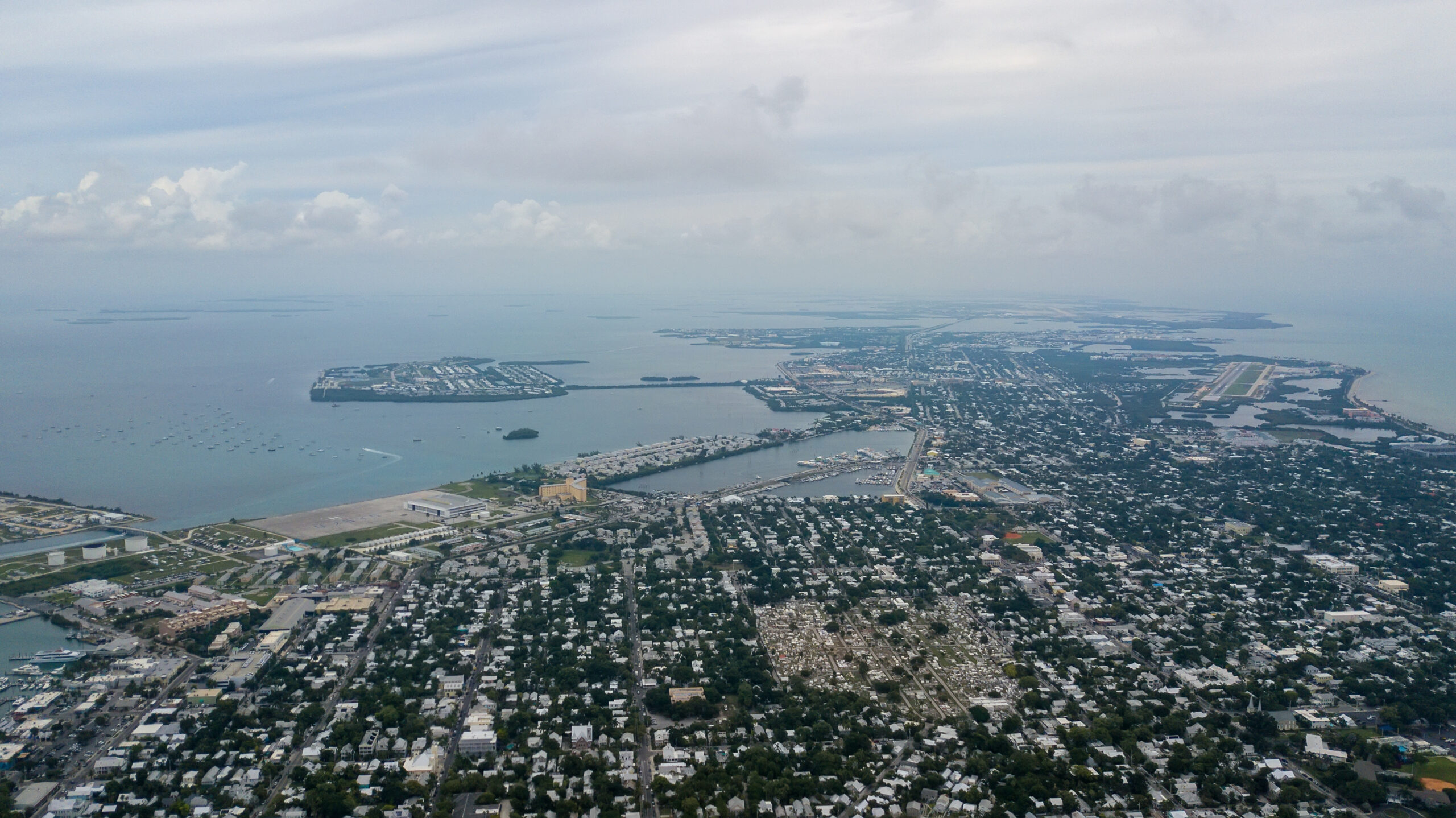Street Economics Insight
Gen Z is ripping up the old playbook on housing. Instead of “starter homes,” they’re opting for swanky, amenity-packed rentals that let them live like it’s a resort. Data shows Gen Z is now the dominant force in the rental market – 9.1 million Gen Z households and counting – and 44% of them live in high-design apartment buildings loaded with gyms, pools, coworking lounges, and pet spas. These self-contained “mini-universe” complexes offer an all-inclusive lifestyle, which Zoomers embrace because they value convenience and well-being (and maybe because buying a house feels as distant as Mars). Why own a 1980s fixer-upper in the burbs when you can rent a luxe downtown pad with a rooftop pool? High mortgage rates and prices aren’t helping either, so Gen Z is renting in style – treating apartments like an Uber ride for living, fully loaded and hassle-free. The result: a generation that’s redefining urban living and giving homeownership the cold shoulder (for now).
Drama Meter
City of Key West Florida’s tiny airport just got a big-city glow-up – a $130 million terminal upgrade now greeting travelers with floor-to-ceiling glass, air-conditioned jet bridges, local art, and even a Chili’s bar in the departures area. For an island known more for conch fritters than cutting-edge infrastructure, this is a serious flex. The new Concourse A boasts bird-friendly panoramic windows that can withstand 200 mph winds, and it’s elevated 14.5 feet to laugh in the face of hurricanes. City-airport tensions? Practically non-existent at the ribbon-cutting – locals who endured the old cramped “cattle shed” terminal are too busy enjoying the A/C and Wi-Fi to complain. In the past, any airport expansion in quirky Key West might have sparked NIMBY grumbling about noise or over-tourism. But add in some sustainable design, faster security, and a smoother baggage claim (coming soon), and suddenly the drama level is near zero. Drama Meter: Low for once – the Conch Republic is actually proud of its new world-class gateway. Who knew a shiny new concourse could bring peace to paradise, if only for a day?
ECOSINT Signal
The U.S.–China economic rivalry has officially gone galactic. A recent deep-dive shows Washington and Beijing duking it out across every high-tech arena imaginable. We’re talking planes ( Boeing vs. China’s COMAC), electric vehicles ( Tesla vs. BYD), advanced chips ( NVIDIA vs. Biren), even supercomputers and space telescopes – each side racing to one-up the other. It’s like a tech Olympics where the gold medal is global economic supremacy. Both nations are pouring resources into R&D and industrial strategy, determined not to let the other dominate next-gen industries. The Wall Street set calls it “decoupling” but on the ground it feels more like an arms race with gadgets and gigafactories. From AI to 5G to outer space, each power is leveraging its unfair advantages (huge markets, hefty subsidies, home-grown talent) to gain the upper hand. The ECOSINT (economic open source intelligence) takeaway: this U.S.–China contest is redefining globalization into a bipolar tech showdown. And if you’re a city or company caught in the crossfire, choose your partnerships (and supply chains) wisely – the new Cold War is running on silicon and software.
Book Drop (Unleash Your Unfair Advantage)
Sometimes a small legal tweak can supercharge city innovation. Case in point: Washington State’s new “Shared Streets” law, just signed and first-in-the-nation. Until now, absurdly, it was illegal for any city here to post speed limits below 20 mph – meaning even if you wanted a pedestrian-friendly zone, the law said “nah, cars gotta go 20”. Enter Senate Bill 5595, effective July 27, and suddenly cities can designate European-style woonerfs (look it up) with 10 mph speed limits and pedestrians wandering right down the middle of the road. Jaywalking? Not a thing on these streets – people have the right of way, period. Cars must crawl at bike speed and yield to everyone. This tiny legal change unleashes a big idea: streets as shared social spaces, not car sluices. Sure, it sounds wonky – but expect forward-thinking Washington cities to pounce on this to create plaza-like blocks, safer play streets, and buzzing commercial strips where foot traffic (and business) can flourish. The unfair advantage here is subtle but powerful: legal code as urban leverage. By simply allowing ultra-slow zones, Washington is handing its cities a new tool to boost walkability, community life, and local commerce. It’s a reminder that innovation isn’t always a new app or big budget – sometimes it’s just deleting an old rule and unleashing pent-up creativity. This would have been today’s Purple Cow if there wasn’t something better. Unleash Your Unfair Advantage here.
Purple Cow of the Day
A Colombian startup called Somos Internet is flipping the script on urban broadband. Forget waiting years for Big Telco to drag fiber into your neighborhood – these folks are rolling out gigabit internet in the dense cityscape of Alcaldía de Medellín at breakneck speed. How fast? The team reportedly lays about 2 km of fiber optic cable per day and has already signed up tens of thousands of subscribers who are thirsty for fast, affordable service. Backed by Y Combinator, Somos uses a clever mix of tech – including cutting-edge wireless links in unlicensed spectrum – to rapidly build out “fiber-quality” networks offering 1 Gbps speeds in underserved urban areas. The result: ~27,000 customers (and counting) getting up to 900 Mbps (even 100 Gbps in some pilot zones) for a price that undercuts the sluggish incumbents. It’s like the STARLINK for cities, except instead of satellites they’re using rooftops and fiber and doing it fast. By creating pop-up ISPs in places traditional providers ignored, Somos Internet is proving that a scrappy startup with an unfair tech advantage can bring first-world internet to the urban developing world. Consider this purple cow well and truly unleashed.
La startup colombiana Somos Internet está reinventando la banda ancha urbana. Olvídese de esperar años a que la gran telco lleve fibra óptica a su barrio – este equipo está desplegando internet gigabit en la ciudad de Medellín a un ritmo vertiginoso. ¿Qué tan rápido? Se dice que tienden unos 2 km de cable de fibra al día, y ya cuentan con decenas de miles de suscriptores hambrientos de un servicio rápido y asequible. Con el apoyo de Y Combinator, Somos utiliza una astuta combinación de tecnologías – incluyendo radioenlaces en espectro libre – para construir rápidamente redes de calidad fibra con velocidades de 1 Gbps en áreas urbanas desatendidas. ¿El resultado? Unos ~27,000 clientes (y subiendo) que disfrutan de hasta 900 Mbps (incluso 100 Gbps en algunas zonas piloto) a precios que dejan mal parados a los incumbentes lentos. Es como el Starlink para las ciudades, salvo que en vez de satélites usan las azoteas y fibra terrestre – y lo hacen rápido. Al crear ISP improvisados en lugares ignorados por los proveedores tradicionales, Somos Internet está demostrando que una startup audaz con una ventaja tecnológica puede llevar internet de primer mundo a entornos urbanos en desarrollo. Sin duda, esta “vaca púrpura” está desatada y dando de qué hablar.
BusinessFlare Take (and another Book Drop)
Detroit is leaning into a little regulatory bonfire to spark its business scene. Mayor Mike Duggan realized the city’s entrepreneurs were drowning in red tape just to open a café or restaurant, so he’s moving to axe a redundant business licensing requirement that did nothing but waste everyone’s time and money. Currently, if you want to start a restaurant in Detroit, you already have to pass building inspections, fire code, and health department checks – then the city made you jump through a whole separate “business license” hoop for kicks. Duggan publicly called out this duplicate nonsense: “Why the hell do we need a City of Detroit license once you’ve cleared all the other codes?” (Good question, Mike). His proposed ordinance would scrap that extra license entirely and even extend the remaining permits from 1 year to 2 years before renewal. He’s also setting up a concierge team to help new owners navigate the process, rather than sabotage them with bureaucracy. The clear city-level implication? Detroit wants to lighten the load for small businesses, making it quicker and cheaper to get from idea to grand opening. In a town hustling to revitalize its neighborhoods, cutting useless regs is a smart way to say Open for Business. The city council still has to sign off, but you can almost hear the cheer from would-be baristas and bar owners on Michigan Avenue. Detroit’s message: bring us your startups and foodie dreams – we’ll try not to crush them with paperwork. Now, who’s next to follow their lead and avoid being included in the next book in our Red Tape Empire literary universe?
Red River Flavor
The global food economy is getting climate-slapped in real time. In Europe, extreme weather is dishing out an average €28 billion (about $32 billion) in farm damage every year. Droughts shriveling crops, freak storms flattening fields – it’s all adding up to a colossal annual gut-punch for EU agriculture. Think of it as Mother Nature’s cover charge for our carbon sins, and Europe’s farmers are paying through the nose. Meanwhile, in the Middle East, Syria’s once-fertile crescent has turned into a food-security horror show. A brutal multi-year drought means 75% of Syria’s wheat crop is expected to fail this year, a loss of about 2.7 million tons of grain – enough to feed 16 million people. Yes, you read that right: an almost total wipeout of the staple that feeds the region. The implications are as spicy as they are dire: higher bread prices, more dependence on imports (if they can afford them), and increased risk of instability in an already fragile country. “Resilience” is the buzzword, but building resilient food systems seems fanciful when the hits keep on coming like this. In response, even sanctions are bending – the U.S. and EU just agreed to let through irrigation tech and infrastructure aid to Syria, hoping to alleviate the crisis, but do we really think that the “former” Al Qaeda terrorist turned president will use it the way intended? Bottom line in this food drama: climate change isn’t a someday threat – it’s torching crops today, from the Red River to the Euphrates. If cities and countries don’t invest in serious ag resilience (drought-resistant crops, better water management, etc.), we’ll all be tasting the consequences. Considering the involvement of al-Sharaa this post maybe should have been filed under ECOSINT.
Space Economy Signal
SpaceX just got the official thumbs-up to blow up – er, launch – its next Starship mega-rocket from South Texas. The Federal Aviation Administration waited on this like an overprotective parent after the last Starship test in March went boom in spectacular fashion. But as of May 22, regulators concluded that Elon Musk’s team has “satisfactorily addressed” the issues from the prior mishap and that Starship is clear for takeoff again. In practical terms, that means SpaceX can resume its quest to send a 400-foot-tall stainless steel skyscraper to orbit (and beyond), potentially as soon as next week. Notably, the FAA’s updated launch license even allows a higher flight frequency from SpaceX’s Starbase pad in Texas – a sign the feds are embracing a quicker cadence of big launches. This space economy signal couldn’t be louder: the era of rapid reusable rocketry is here, and the government (cautiously) isn’t standing in the way. If Starship’s next flight sticks the landing (figuratively – literally it’s not landing yet), it will herald a new class of ultra-heavy lift capacity, opening the door for massive satellite deployments, Moon missions, and maybe one day Mars colonization infrastructure. Also in play: the competitive heat. Amazon’s Kuiper, NASA – National Aeronautics and Space Administration’s Artemis plans, and every space startup with interplanetary dreams are watching closely. A fully operational Starship could drastically cut launch costs – and that’s big business. For local economies, SpaceX’s green light means continued growth of the space supply chain from Boca Chica to Cape Canaveral and beyond. Keep your helmets on, folks; the commercial space race is about to throttle Ludicrous Speed.
The Music Cities
Amid the rush to build glass towers and tech hubs, here’s a sweet encore for urban culture: West Palm Beach’s legendary Sunset Lounge is nearing its grand re-opening, proving that music and history still have a pulse in city planning. The Sunset Lounge – once a segregation-era jazz club that hosted icons like Ella Fitzgerald and Count Basie – has been undergoing a multi-million dollar revival, and the final phase of renovations just kicked off. The city literally raised the roof (adding a rooftop bar and performance space) and restored the 7,200 sq. ft. Art Deco venue to its former glory with modern touches. West Palm is hyping it up as a cornerstone for the historic Northwest District, signaling a commitment to the African-American cultural legacy that the Lounge represents. When it opens later this year, expect live music on multiple stages, a full-service restaurant and jazz-era vibes polished for the 21st century. The music city ethos here is strong: invest in creative infrastructure and the arts to drive urban revival. We’ve seen it from Nashville to New Orleans – and now West Palm Beach is betting on a jazz club to anchor community revival and tourism. In an age when every city chases the next high-tech “innovation center,” there’s something refreshing (and savvy) about doubling down on music, soul and history. The Sunset Lounge’s comeback tour is a reminder that sometimes the best economic development strategy is to put culture center stage and let the music do the talking, as long as you don’t screw it up (looking at you Austin and Miami).
About Street Economics Daily
Street Economics Daily cuts through noise, jargon, and bureaucracy to deliver sharp, actionable insights for civic and economic development professionals. Blunt, irreverent, and grounded firmly in reality, it’s essential daily reading for city leaders who refuse to settle for outdated strategies.
BusinessFlare | Street Economics | Drama Meter | The Music Cities | Goodnight’s Red River




Comments are closed